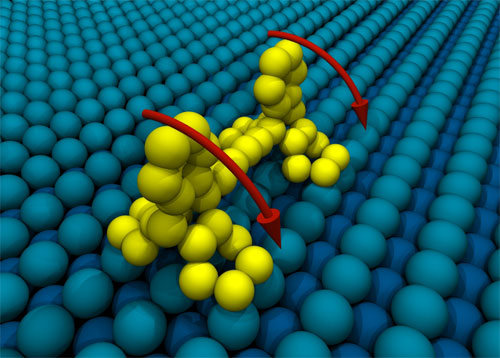Understanding Molecular Nanotechnology: A Comprehensive Guide
Definition: Molecular Nanotechnology (MNT) is an advanced form of nanotechnology that involves the manipulation and construction of materials and devices on the scale of atoms and molecules. Unlike broader nanotechnology, which encompasses any technology on the nanoscale, MNT specifically focuses on the precise control of the molecular structure to create novel materials and mechanisms.

Distinguishing Features of Molecular Nanotechnology
Molecular Nanotechnology is characterized by its goal of atomic precision. It aims to design and build machinery and materials at the molecular level, enabling unprecedented control over physical properties. This approach promises revolutionary advancements in various fields, from medicine to materials science, by allowing for the construction of more efficient, durable, and intelligent products.
Comparison with General Nanotechnology
While "nanotechnology" broadly refers to any technology developed on the nanometer scale, Molecular Nanotechnology specifies the engineering of structures atom by atom or molecule by molecule. This precision engineering is the key distinction, as it targets the fundamental building blocks of matter to achieve functionalities not possible with bulk materials or less precise nanotechnologies.
Comparing Molecular Nanotechnology and Self-Assembly
Understanding the nuances between molecular nanotechnology (MNT) and self-assembly is crucial in appreciating the breadth of nanotechnology's capabilities and applications. While both concepts operate within the nanoscale realm, their approaches, mechanisms, and outcomes significantly differ, marking distinct pathways in nanoscience and nanotechnology.
Molecular Nanotechnology (MNT)
Molecular Nanotechnology is an advanced form of nanotechnology that involves the precise manipulation and construction of structures at the molecular level, atom by atom or molecule by molecule. This method aims to build complex nanostructures and nanomachines with specific functionalities, tailored to perform particular tasks. MNT envisions the creation of highly advanced materials and devices, including molecular computers and nano-robots, through deliberate design and synthesis. The precision and control inherent in MNT allow for the creation of novel materials and mechanisms that do not necessarily form naturally.
Self-Assembly
Contrastingly, self-assembly is a process where molecules spontaneously organize into ordered structures without external guidance or manipulation. This process is driven by the intrinsic properties of the molecules themselves, such as shape, charge, and hydrophobic/hydrophilic tendencies. Self-assembly can occur in various scales and forms, including the formation of micelles in solution, crystalline structures, and complex biological formations like cellular membranes and DNA. The process is fundamental to many natural phenomena and is increasingly harnessed in creating nanomaterials and devices by designing molecules with specific properties that guide their assembly into desired structures.
Key Differences
- Precision and Control: MNT offers a higher degree of precision and control, allowing for the construction of structures that may not naturally occur through self-assembly. In contrast, self-assembly is governed by the inherent properties of molecules and their natural inclination to form certain structures under specific conditions.
- Complexity and Functionality: MNT has the potential to create more complex and functional structures tailored to specific applications, whereas self-assembled structures are often limited by the natural interactions and compatibility of molecules.
- Methodology: MNT involves deliberate and external manipulation of molecules using sophisticated tools and techniques. Self-assembly, however, relies on the natural tendency of molecules to organize into structured formations without such direct intervention.
Both molecular nanotechnology and self-assembly represent essential facets of nanotechnology, each with its unique advantages and limitations. While MNT embodies the pinnacle of control and customization in nanoscale engineering, self-assembly offers a simpler, often more energy-efficient pathway to creating ordered structures. The convergence of these approaches may lead to groundbreaking advancements in nanotechnology, leveraging the strengths of each to fabricate complex nano-enabled systems and materials.
Applications of Molecular Nanotechnology
MNT holds the potential to revolutionize various fields: In medicine, it could lead to targeted drug delivery systems and nanorobots for surgery or cellular repair. In materials science, it promises materials with enhanced properties such as strength, durability, or electrical conductivity, potentially through processes like mechanosynthesis – where mechanical forces are used to manipulate molecular bonds – for unprecedented control of material formation. Furthermore, MNT could revolutionize energy storage and production, environmental cleanup, and information technology.
Challenges and Future Directions
Despite its potential, Molecular Nanotechnology faces significant challenges. These include technical hurdles in manipulating individual atoms, ethical concerns regarding its impact on health and the environment, and the need for substantial investment in research and development. The future of MNT depends on overcoming these challenges through innovation, responsible stewardship, and interdisciplinary collaboration.
Technological Impacts and Ethical Considerations
The development of MNT raises important ethical questions about privacy, security, and the potential for its misuse. As with any powerful technology, establishing guidelines and regulations to ensure its beneficial use is crucial. Moreover, the technological impacts of MNT, including economic disruption and environmental implications, require careful consideration and proactive management.
Innovative Research and Development
Advancing MNT requires breakthroughs in nanoscience and nanoengineering. This includes the development of new tools for molecular manipulation, computational models for predicting molecular behavior, and interdisciplinary research to translate basic science into practical applications. The pursuit of MNT is a global effort, with researchers from various fields contributing to its progress.
